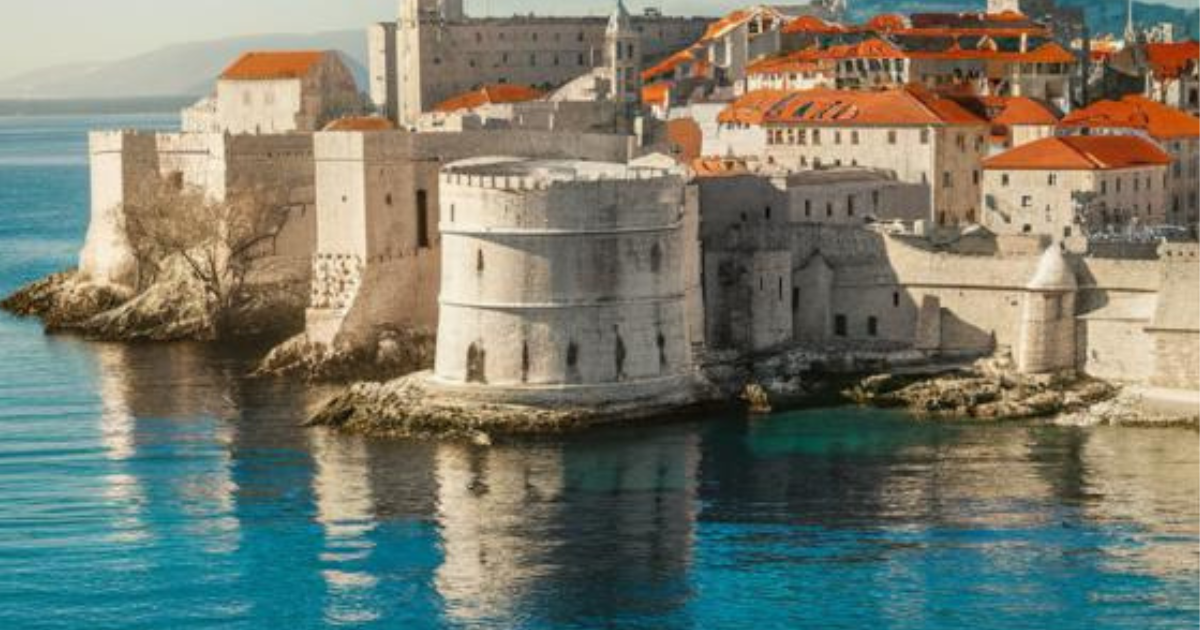Table of Contents
Game of Thrones filming Locations on HBO introduced fanatics to a terrific colourful international of medieval intrigue, sizable landscapes, and historic secrets and techniques. However, few comprehend that these fantastical locations stem from real worldwide places painstakingly selected to add authenticity and grandeur.
This manual explores the enchanting locations that added Westeros and Essos to existence, putting the level for epic battles, political machinations, and gripping memories of loyalty and betrayal.
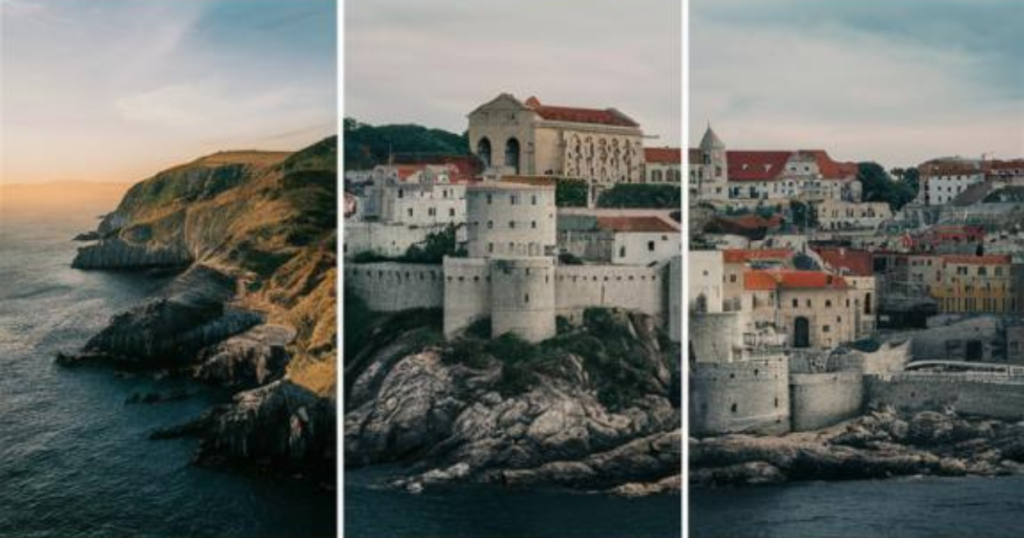
Diverse Landscapes Transcending Fiction
“Game of Thrones Filming Locations” showcases various environments, from arid deserts to icy tundras, representing specific parts of its fictional globe. These landscapes had been not mere laptop-generated imagery but actual locations that have intrigued and captivated visitors internationally.
Northern Ireland
- Castle Ward – Transformed into Winterfell, the ancestral seat of House Stark.
- Dark Hedges – Known as The Kings Road, in which Arya Stark journeyed underneath the safety of Yoren.
Iceland
The icy expanses and rugged terrains doubled because of the lands Beyond the Wall. Locations which include Thingvellir National Park supplied the backdrop for wildland scenes, offering snowstorms and austere beauty.
- Lake Myvatn – Portrayed the wildling camp and Mance Rayder’s army.
- Vatnajökull – Iceland’s largest glacier served as the putting for the Fist of the First Men.
Spain
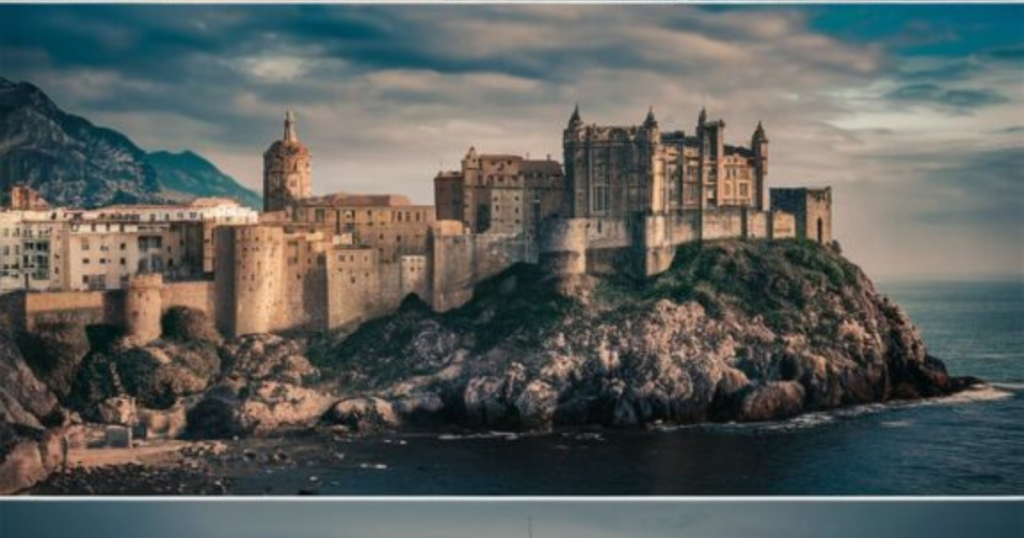
Dorne’s sunlit palaces and Essos’s opulent cities come to life via Spain’s various structures and landscapes.
- Alcázar of Seville – Transformed into the Water Gardens of Dorne, brimming with Moorish allure.
- Castle of Zafra – Stood in for the Tower of Joy, great in Jon Snow’s ancestry.
Croatia
Dubrovnik has become synonymous with King’s Landing, the capital of the Seven Kingdoms. With its ancient fortifications and Adriatic Sea vistas, the town created a tangible feel of medieval city life.
- Pile Gate – The primary gate became a critical entry factor into King’s Landing.
- Fort Lovrijenac – Known as the Red Keep, overlooking Blackwater Bay and the harbor.Morocco
Essos’s jap cities are drawn from Morocco’s ancient locations. Ait Ben Haddou stood in for Yunkai and Asata portrayed Pentos, reflecting the collection’s global-building efforts’ range and intensity.
Northern Ireland: The Heart of Westeros
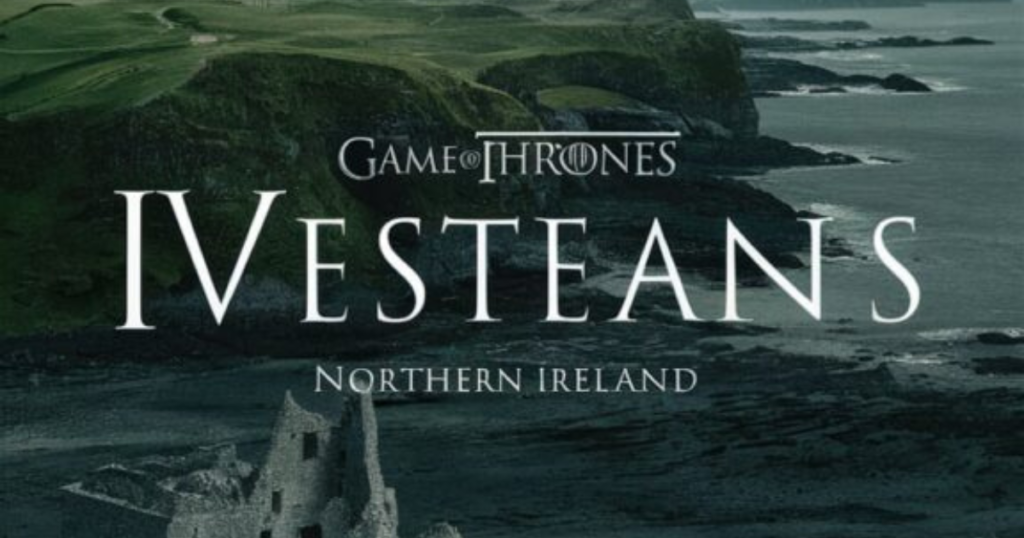
Northern Ireland, with its mesmerizing landscapes and dramatic coastlines, stood in as many key locations inside Game of Thrones. Its rich, numerous terrain made it the ideal backdrop for the collection’ numerous settings.
Key Filming Locations
- Dark Hedges: Known in the series as the King’s Road, this hauntingly lovely avenue of beech bushes capabilities prominently. It is the course taken by Arya Stark whilst she escapes King’s Landing.
- Ballintoy Harbor: Serving because of the rugged Iron Islands, this spot saw Theon Greyjoy’s return to the area of his delivery.
- Cushendun Caves: These historic caves provided the eerie setting for Melisandre’s shadowy childbirth scene.
- Downhill Beach: Portraying Dragonstone, this expansive seaside is in which Melisandre burns the effigies of the Seven Gods.
Castles and Strongholds
- Castle Ward: This served as Winterfell, the ancestral seat of House Stark. Visitors can discover the fort’s iconic towers, walls, and grounds.
- Shane’s Castle: Featured as the putting for numerous key scenes, consisting of jousting tournaments hosted by House Lannister. The surrounding forests were also used for scenes depicting the Wolfswood.
Natural Attractions
Northern Ireland’s natural splendor was depicted in several scenes:
- Giant’s Causeway: While now not a filming vicinity, its otherworldly basalt columns are reminiscent of the collection’ dramatic settings.
- Murlough Bay: Featured as Slaver’s Bay, in which Tyrion and Jorah are captured. Its rugged cliffs and sweeping perspectives lent authenticity to the storyline.
Visitor Experience
Fans of the series can immerse themselves through:
Guided Tours: These specialized excursions show site visitors through the aforementioned places with special, insider knowledge, and probably the most everyday tales.
Exhibitions: The primary reason the viewers find this tour interesting is the possibility to gain more detailed and behind-the-scenes knowledge about the show along with spectacular costumes, props, and sets available for view at the Game of Thrones Studio Tour.
The Kingdom of Westeros is delivered to existence in Northern Ireland, wherein site visitors can step without delay into scenes from the series. From the historic grounds of Castle Ward to the breathtaking Dark Hedges, those locations provide an immersive enjoyment for fanatics and newbies alike.
Iceland: The Frozen North Beyond the Wall
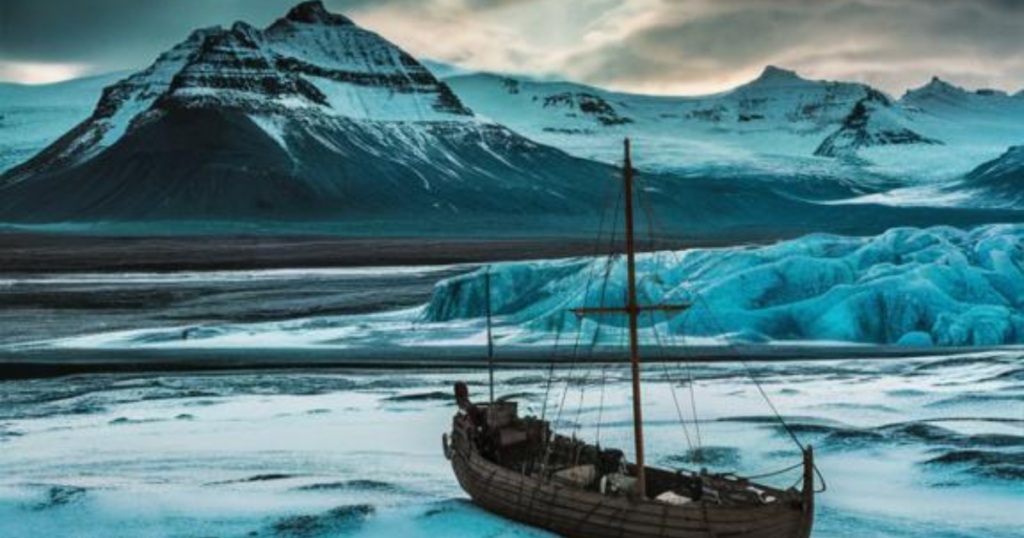
Iceland’s otherworldly landscapes convey the chilling, enigmatic areas beyond the Wall to lifestyles in Game of Thrones. The haunting, stark splendor of Iceland flawlessly encapsulates the relentless wilderness wherein the Night’s Watch faces the ever-looming danger of the White Walkers. Several key places throughout the United States function as unforgettable backdrops, instilling a palpable feeling of isolation and peril.
Key Filming Locations in Iceland
- Hingvellir National Park: This UNESCO World Heritage site, marked through dramatic rifts and canyons, doubles because of the vicinity of the brutal encounters within the Riverlands and the paths taken with the aid of the Hound and Arya Stark. The park’s awesome geological features make it an evocative place, adding intensity to the series’ underlying subject matters of war and survival.
- Mývatn Lake and Grjótagjá Cave: Near this serene lake lies Grjótagjá Cave, where Jon Snow and Ygritte share an intimate moment amid geothermal warmth. The assessment of icy terrains with hot springs reflects Iceland’s particular blend of harshness and beauty, making it an ideal preference for such an emotionally sizable scene.
- Hofdabrekka, near Vík: The black sand beaches and jagged sea stacks of Vík rework into the Frostfang Mountains, wherein Jon Snow and the wildlings traverse ambitious ice-covered landscapes. This visually putting area underscores the characters’ onerous journey and the ever-gift threat in the northern nation-states.
- Vatnajökull Glacier: Europe’s largest glacier, it affords the awe-inspiring putting for numerous expeditions past the Wall. The expansive icy vistas and dangerous crevasses create a resounding portrayal of the tough, unforgiving conditions confronted with the aid of the Night’s Watch and the Free Folk.
Iceland’s cooperation with the production of Game of Thrones now not handiest improved the show’s visible authenticity but additionally sparked renewed hobby in its unique terrain. The brilliant assessment between fireplace and ice, a seamless combo of mythology, and herbal beauty offers visitors a remarkable visual experience.
Spain: The Sunlit South and Exotic Essos
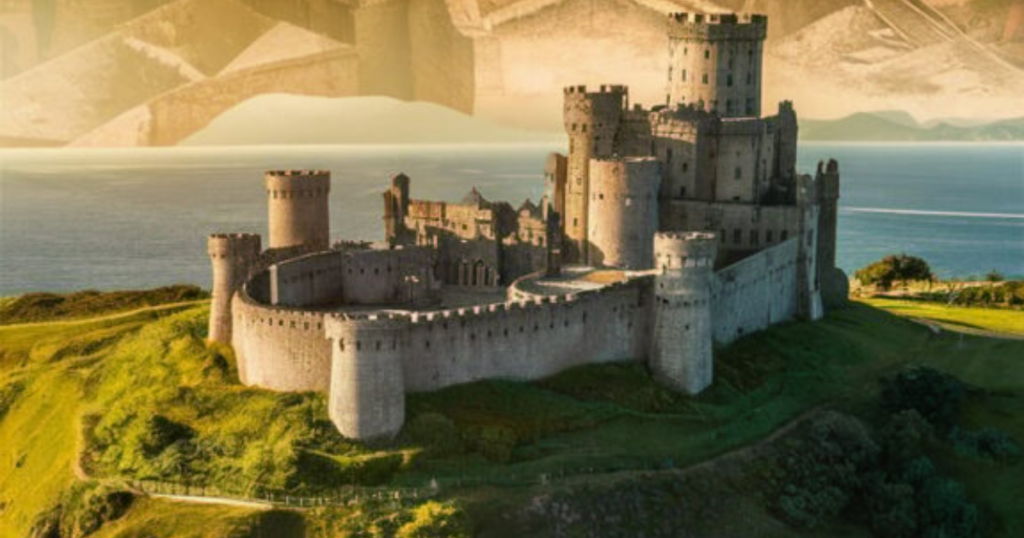
Spain gives a charming backdrop that brings the sunlit areas of Westeros and the extraordinary lands of Essos to life.
Seville: The Royal Palace of Dorne
Real Alcázar Of Seville or The Water Gardens of Dorne serves as the model because of its perfect depiction of Moorish architecture, special tiling paintings, as well as beautiful gardens. This World Heritage Site provides the site visitor an entree into the please royal and serene way of living of House Martell.
- Location: Seville, Andalusia
- Key Features: Moorish tile paintings, lush gardens, fountains
- Significant Scenes: Prince Doran Martell’s palace scenes, circle of relatives gatherings
Córdoba: The Long Bridge of Volantis
The Roman Bridge in Córdoba substitutes for the Long Bridge of Volantis, supplying an imposing presence with its robust arches stretching across the Guadalquivir River. This iconic bridge evokes the bustling and numerous lifestyles of Volantis.
- Location: Córdoba, Andalusia
- Key Features: Roman-generation arches, historic importance
- Significant Scenes: Slave markets, Red Priestess preaching
Girona: The Free City of Braavos
Girona’s medieval streets and slim alleys stand in for the Free City of Braavos. The complex Gothic and Romanesque architecture perfectly illustrates the mystique and complexity of Arya Stark’s adventure.
- Location: Girona, Catalonia
- Key Features: Gothic quarters, stone bridges, labyrinthine streets
- Significant Scenes: Arya’s training with the Faceless Men, streets of Braavos
Almería: The Dothraki Sea
The rugged, desolate tract landscapes around Almería double as the Dothraki Sea. The sizable, arid expanses create an actual setting for scenes depicting the nomadic lifestyle of the Dothraki tribes.
- Location: Almería, Andalusia
- Key Features: Desert landscapes, rugged terrain
- Significant Scenes: Daenerys Targaryen’s interactions with Khal Drogo and the Dothraki horde
Cáceres and Trujillo: King’s Landing and Western Essos
The historic walled towns of Cáceres and Trujillo function as multifaceted filming locations, illustrating various components of King’s Landing and other regions in Western Essos. Their preserved medieval and Renaissance architecture presents an immersive reveal in of the collection’s grand settings.
- Location: Extremadura location
- Key Features: Walled fortresses, medieval streets, Renaissance buildings
- Significant Scenes: Market scenes, collecting places for conspiracies
Spain’s various landscapes and ancient structures now not simplest decorate the visible attraction of Game of Thrones but also offer a rich, immersive historical past that parallels the problematic global of the collection.
Croatia: The Jewel of King’s Landing
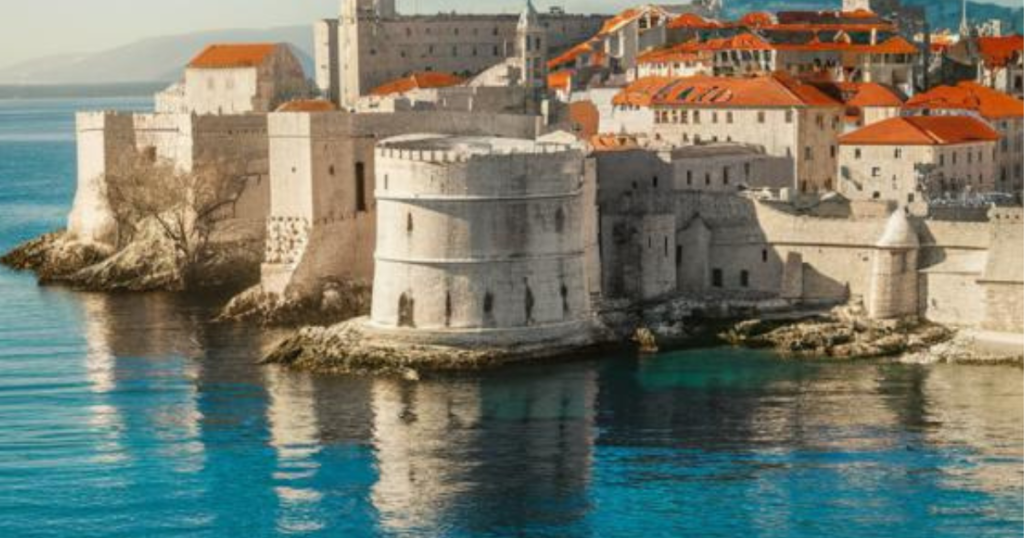
Croatia, with its wealthy history and stunning architecture, served as the number one filming region for King’s Landing, the capital of the Seven Kingdoms. The metropolis’s blend of medieval, Renaissance, and Baroque styles provided an impeccable backdrop for the grandeur and complexity of the fictional capital.
Key Filming Locations
- Dubrovnik: Known as the principal stand-in for King’s Landing, this coastal metropolis boasts well-preserved city walls, ancient fortresses, and narrow cobbled streets. Notable websites consist of:
- Fort Lovrijenac: Frequently acting because of the Red Keep, this citadel offers dramatic cliffside perspectives best for royal intrigue.
- Pile Gate: This grand front served as the gateway to the bustling metropolis, where numerous key scenes spread out.
- Minčeta Tower: Recognized with the aid of lovers because the House of the Undying, it is a part of Dubrovnik’s fortifications and affords panoramic perspectives.
- Lokrum Island: Located just a short boat experience from Dubrovnik, this lush island doubled because of the city of Qarth. It features botanical gardens and a Benedictine monastery, developing an exotic landscape.
Cultural Significance
The choice of Croatia was no longer only because of its ancient structure but also its colorful cultural scene. Dubrovnik’s annual Summer Festival showcases the metropolis’s commitment to retaining its cultural heritage, mirroring the rich tapestry of lifestyles in King’s Landing.
Visitor Experience
Fans traveling to Croatia can engage in a plethora of activities:
1. Guided Tours: Numerous tours offer comprehensive explorations of filming locations, replete with at-the back-of-the-scenes anecdotes.
2. Historical Insights: Visiting the Dubrovnik City Walls Museum gives an academic angle at the metropolis’s history.
3. Scenic Walks: The ancient town partitions offer a surreal enjoyment with breathtaking views of the Adriatic Sea.
Seasonal Considerations
- Summer: Ideal for taking part in outside cafes and sunbathing in opposition to the backdrop of King’s Landing, despite the crowds.
- Spring/Fall: Perfect for the ones preferring a quieter, extra comfortable environment with moderate weather.
- Winter: Offers peace and solitude, although a few excursions may be constrained.
In essence, Croatia offers a deep dive into the sector of Game of Thrones, wherein visitors can honestly experience as though they’ve stepped into the Seven Kingdoms.
Scotland: The Groundbreaking Beginnings
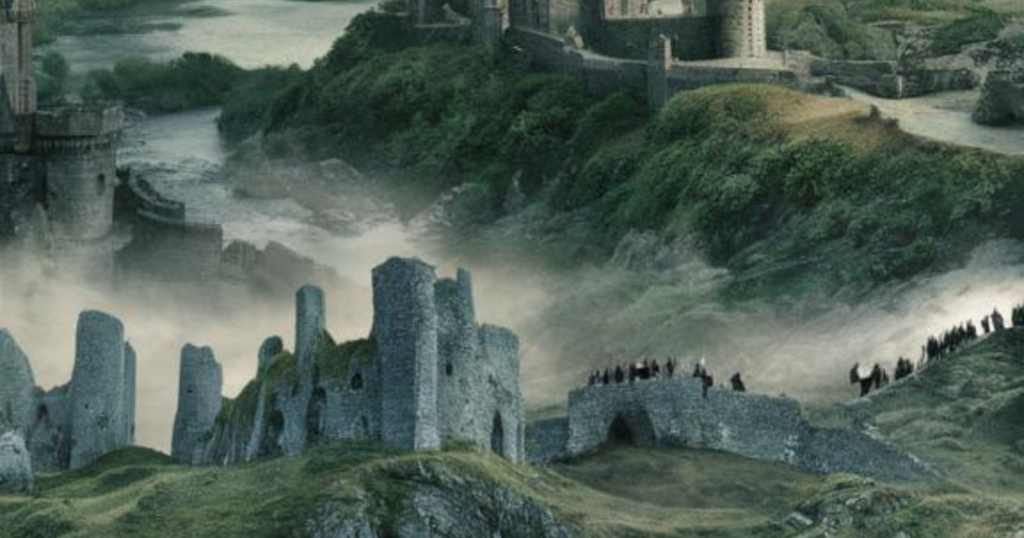
Scotland has for many years mystified the human mind with its beautiful sceneries of mountainous terrains, historic castles, and proper history. It is no wonder that this captivating us played a full-size position within the creation of the fictitious global of Westeros as observed in “Game of Thrones.”The showrunners frequently drew proposals from various Scottish landmarks and historic activities, which contributed to the proper sense of the collection’ early seasons.
Nestled amidst rolling hills and mystical highlands, numerous key places in Scotland function as the real-global counterparts for the fable epic:
Doune Castle
- Name: Doune Castle
- Location: Near the village of Doune, Stirlingshire
- Significance: Doune Castle is prominently featured in the pilot episode of “Game of Thrones.” It stands in for Winterfell, the ancestral domestic of House Stark. The castle’s medieval structure and implementing shape provide a fitting illustration of the Stark family’s stronghold.
Ballintoy
- Name: Ballintoy
- Location: Northern Ireland (part of broader Scottish heritage)
- Significance: Although technically placed in Northern Ireland, Ballintoy’s rugged coastal surroundings pay homage to Scottish landscapes. It was used to depict the Iron Islands, home to House Greyjoy. The raw, untamed splendor of Ballintoy complements the Greyjoys’ maritime tradition.
Hadrian’s Wall
- Name: Hadrian’s Wall
- Location: Border between England and Scotland
- Significance: While Hadrian’s Wall isn’t always exclusively in Scotland, its historical importance stimulated “The Wall” in “Game of Thrones.” This historical Roman fortification as soon as marked the northern boundary of the Roman Empire and inspired the ice-capped boundary that protected the Seven Kingdoms from the dangers past.
The Highlands
- Region: Scottish Highlands
- Significance: The breathtaking beauty of the Scottish Highlands has inspired the various desert scenes past the Wall. The enormous, dramatic landscapes offer a super backdrop for the gritty, regularly perilous journeys undertaken with the aid of the Night’s Watch and different characters.
Standing Stones at Callanish
- Name: Callanish Stones
- Location: Isle of Lewis
- Significance: These historical, enigmatic stones are said to have stimulated the Standing Stones of Westeros, in which mystical rituals and powerful ceremonies take place. Their mysterious presence and ancient significance echo the deep roots of magic in Westeros.
Scotland’s unique landscapes and ancient landmarks performed an essential position in setting the tone for “Game of Thrones,” offering a tangible hyperlink to the rich, fantastical international of Westeros.
Malta: The Early Days of Westeros
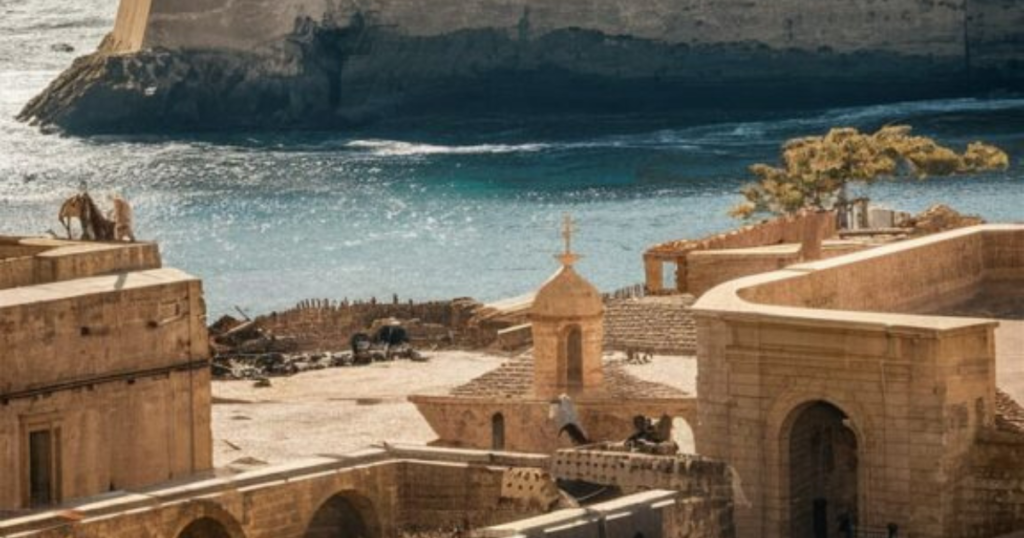
Malta, with its rich records and placing landscapes, furnished the ideal backdrop for the initial episodes of “Game of Thrones.” As one of the first filming places used within the series, numerous iconic scenes have been introduced to existence here.
Key Filming Locations in Malta
1. Mdina Gate:
- Featured prominently as King’s Landing’s entrance within the display’s debut season.
- Historic environment and medieval architecture provided an authentic sense.
2. Azure Window, Gozo:
- Served because of the placing for Daenerys Targaryen and Khal Drogo’s wedding ceremony.
- Visuals of the towering limestone arch over the Mediterranean Sea made this scene unforgettable.
3. Fort Ricasoli:
- Depicted in numerous scenes as the Red Keep’s gate.
- Its coastal perch and ambitious shape captured the essence of the capital’s fortifications.
4. San Anton Palace:
- Used for diverse indoor shots of the Red Keep.
- The ornate gardens and traditional Maltese structure delivered a regal contact to the series’ royal settings.
5. Fort Manoel:
- This grand fortification turned into transformed into the Great Sept of Baelor.
- Key scenes, which include Ned Stark’s unwell-fated war of words, have been filmed here.
Historical Influence
- Malta’s rich tapestry of ancient influences, from the Phoenicians to the Knights of Saint John, lends a real medieval atmosphere.
- The strategic vicinity in the Mediterranean has ended in a unique combo of cultural and architectural elements.
Visual Appeal
- The natural landscapes and ancient buildings of Malta contribute significantly to the show’s visible storytelling.
- By proposing factors together with limestone cliffs, fortified cities, and serene churches, the series captured the timeless beauty and drama inherent in Malta’s scenery.
Importance for Fans
- For “Game of Thrones” aficionados, Malta has emerged as a pilgrimage website online.
- Fans flock to these places to revel in firsthand the settings in which key plotlines opened up and pivotal moments came about.
Due to its historical background and the number of shooting locations, Malta contributed to setting the visual and thematic foundation of ‘‘Game of Thrones. ” Maltese input in the shootings has created quite a lasting impression as enthusiasts in the Television series are advised to visit Malta.
Morocco:
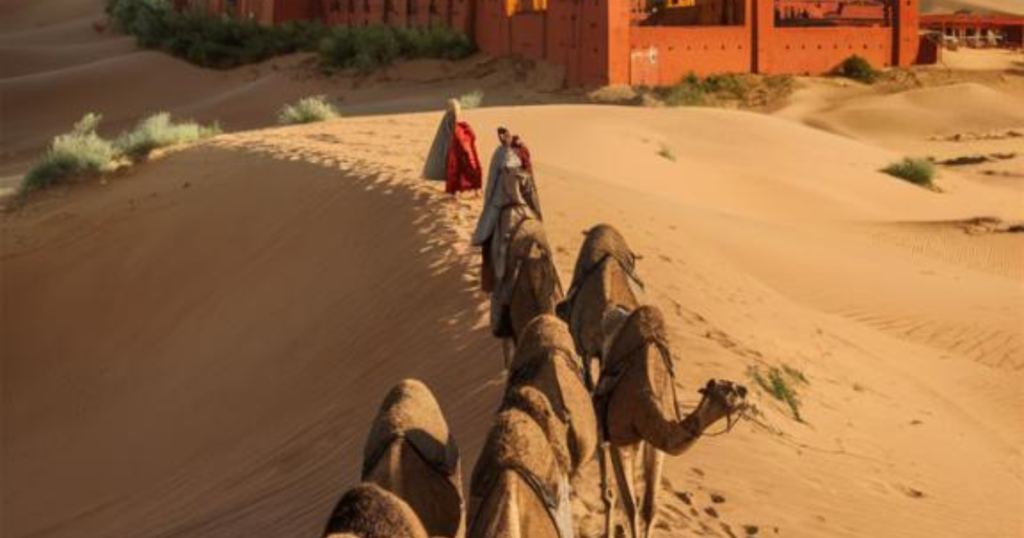
Many scenes shot inside the eastern continent of Essos in Game of Thrones were shot at Mysteries of Essos Morocco, with its consequently rich architectural past and beautiful terrains. Of the above-mentioned, the towns of Aït Benhaddou, Essaouira, and Ouarzazate were described in detail. Aït Benhaddou Aït Benhaddou, a UNESCO World Heritage location, served the position of the town of Yunkai precisely within the show.
This fortified village is one of the most beautiful examples of properly-preserved earthen clay architecture. This is additionally the place where the audiences see Daenerys Targaryen liberating the city in Season 3 of the show.
Aït Benhaddou
Aït Benhaddou, a UNESCO World Heritage website online, doubled because of the metropolis of Yunkai inside the show. This ksar, or fortified village, is renowned for its properly-preserved earthen clay architecture. It’s right here that viewers witnessed Daenerys Targaryen free up the metropolis in Season 3.
- Key Scenes: Daenerys’s conquest and the pivotal assembly with the town’s ruler.
- Notable Features: The labyrinthine streets, the grand gates, and the huge towers.
Essaouira
Essaouira portrayed the metropolis of Astapor, famously known as the web page wherein Daenerys acquired the Unsullied army. This coastal Moroccan city presented an authentic feel with its sturdy winds and vintage allure.
- Key Scenes: Daenerys’s purchase and next release of the Unsullied.
- Notable Features: The ancient medina, sturdy metropolis partitions, and the bustling harbor.
Ouarzazate
Known as the “Door of the Desert,” Ouarzazate was another widespread filming site. The Atlas Corporation Studios, positioned here, furnished the scenery for various interiors and grand exteriors, representing more than one Essos location.
- Key Scenes: Multiple interior shots for Yunkai and Pentos.
- Notable Features: Expansive wilderness landscapes, massive movie sets, and well-known historical kasbahs.
Exploring the Locations
For those interested in journeying these iconic websites, guided tours are to be had, supplying comprehensive insights into the filming manner and the rich history of every place.
Travel Tips:
1. Best Time to Visit: Spring or fall for milder weather.
2. Duration: Allocate at the least days in keeping with the web page to fully immerse oneself in the revel in.
3. Local Cuisine: Don’t pass over attempting traditional Moroccan dishes like tagine and couscous all through the journey.
These Moroccan gemstones, with their timeless allure and ancient significance, provide an immersive revel for fans and travelers alike.
Co: As a fan of the show have ever wondered how to plan your Game of Thrones travel adventure?
To go on the Game of Thrones tour, therefore, calls for proper planning to capture the best views of the enduring locations and sceneries that bring Westeros to reality.
Research and Select Locations
Identify Key Filming Sites: The first step will be to define the major shooting locations for the collection. Sites include Dubrovnik, Croatia, the silent city of Mdina, Malta, and Northern Ireland among others.
Match Locations with Episodes: Some websites could be correlated to the episode or a scene of interest to bring on a better experience. For instance, the city of Dubrovnik is used as the King’s Landing, and the Dark Hedges in Northern Ireland as the King’s Road.
Create an Itinerary
Prioritize Destinations: Identify the key areas in the decision tree where you can not make your decision without help, and do so. Factor in time and how easy or difficult it would be to access the identified source.
Estimate Travel Time: Factor inside the time required to travel among destinations, such as potential flights, teach rides, or automobile hires.
Allocate Time for Exploration: Schedule enough time at each website to comprehend the details. Some places may additionally require guided tours, so reserving earlier is helpful.
Book Accommodations
- Proximity to Filming Sites: Choose lodgings that are near the primary sites. This saves time and enhances comfort.
- Local Experience: Opt for motels that offer a neighborhood taste, along with guesthouses or boutique hotels, which may also provide insights into the local tradition and traditions showcased in the collection.
Plan Activities
- Guided Tours: Consider reserving guided Game of Thrones excursions that provide targeted historical and production insights.
- Local Attractions: Beyond the filming websites, encompass nearby attractions and sports to create a balanced itinerary. In Dubrovnik, as an example, take time to discover the medieval walls, or in Northern Ireland, go to the Giant’s Causeway.
Pack Accordingly
- Weather-appropriate clothing: Research the climate of every vacation spot. Northern Ireland can be moist and windy, even as Malta can be hot and dry.
- Travel Essentials: Bring gear that suits out-of-door exploration, inclusive of snug walking walk shoes and travel-length umbrellas or rain jackets.
This established approach ensures a seamless and immersive Game of Thrones travel journey.
Guidelines on the Best Periods for Travel and Abode
As for the representatives of the fair sex, they need to make careful preparations before going to these places A few remarks before going to the most fascinating places associated with “Games of Thrones” It is rather difficult to give recommendations regarding the choice of the traveling season and the kind of lodging. Consider the following insights:
Ideal Travel Seasons
1. Dubrovnik, Croatia (King’s Landing)
- Best Time: Or during April to June, or September to October, respectively.
- Why: These months are comparatively less crowded and the weather is not very hot but not very cold as well unlike the summer period.
2. Northern Ireland – Winterfell, The Iron Islands, Dragonstone
- Best Time: Spring from May to September.
- Why: Summer months are characterized by the availability of more sunlight and warmer climates.
3. Iceland (Beyond the Wall)
- Best Time: During summer that is between June and August.
- Why: Especially useful when looking for the outdoors because the weather is a little warmer and the days are longer.
4. The lands of Spain such as Dorne, Dragonstone, and King’s Landing
- Best Time: Of the two suggested seasons, the best one to go to Norway is either in April, May, or June or in September, October, and November.
- Why: Experience the weather that lets tourists be comfortable without overdressing and attractions that do not have hundreds of people jamming through it at once. Spain is quite hot, and in summer, southern Spain can get extremely hot.
Accommodation Suggestions
Dubrovnik, Croatia
- Old Town Rentals: To get more or rather less modern accommodation, it is required to choose a place to stay within the walls of the historic center.
- Boutique Hotels: Some recommendations of the locations, which can be interesting for investors, can be as follows: view to the sea, particularly to the Adriatic Sea.
Belfast, Northern Ireland
- City Center Hotels: Possible maintenance of transportation for moving from one place of shooting to the other.
- Country Estates: Get to see just how beautiful the countryside of Northern Ireland is.
Reykjavik, Iceland
- Central Guesthouses: Achieve the greatest amount of comfort and functionality for “Tours Beyond the Wall.”
- Remote Lodges: In Iceland consider among working environments; Include locations amid Iceland’s impressive backdrops.
Seville, Spain
- Historic Hotels: Martinfirth It is recommended to stay close to Alcazar of Seville, the shooting location for the Dorne palace.
- Luxury Villas: Welcome the calmness and the sophistication and regal worthy style.
Important Aspects Related to Movements and Stay
- Book in Advance: To ensure the traveler does not fall victim to a price surge they should book houses as early as possible.
• Check for Filming Tours: Some of the hotel deals comprise guided tours to famous shooting sites or scenes.
- Familiarize with Peak Hours: Avoid the places of interest during rush hour because you will find most people there in the morning.
- Stay Connected: Remember, to have a strong Wi-Fi connection to let others know your progress and be aware of the advisories in the area.
It all goes to show that this kind of careful preparation only enriches the feeling of a thematic stroll through the shooting locations of “Game of Thrones. “
Interview with a GOT location manager
During the following panel, location scout Andrew McClay discussed the challenges and successes of shooting in real-world settings to deliver the worlds of Westeros and Essos. He elaborated on how they undertook the task to ensure that it was closely related to greatness and was done in a very clean and real manner.
McClay said, “We wanted every viewer to feel as if they are completely immersed in another world but that world has to exist in the real world.”
Key Considerations
- Geographical Accuracy: The team required regions that would relate to the diverse terrains as depicted in George R. R. Martin’s books. Every place needed to look like it was in different regions of the world ranging from the chilly Arctic to the scorching desert.
- Local Culture: They strived to find places where the native traditions would add more to the history. Thus, their choices depended on natural and cultural landmarks, history, and architecture types.
- Accessibility and Permits: Supply chain management was important. This means that providing the shooting crews with ways of getting to the wilds while at the same time, obtaining the shooting permits and local cooperation was a major task.
- Weather Conditions: The weather was an important factor in choosing the locations, yea. For instance, shooting in Iceland necessitated shooting during the winter months to capture the right feel of the country.
Memorable Locations
- Dubrovnik, Croatia: This city became the shooting place for King’s Landing as it has a historic fortified wall and breathtaking views of the sea.
- Dark Hedges, Northern Ireland: Familiar to viewers of the series as the King’s Road, these beech trees created rather an eerie atmosphere.
- Alcázar of Seville, Spain: For the Water Gardens of Dorne, they used detailed architecture known as Moorish involved to give a lavish and other-worldly appeal.
- Vatnajökull, Iceland: As a location beyond the Wall it stands for vast ice fields and severe rocky landscapes it was selected for the filming.
Challenges Faced
However, some difficulties had to be encountered to secure the locations. McClay noted that:
- Environmental Protection: Shooting in places like Iceland required diligent planning to ensure no damage was done to the natural landscape.
- Local Engagement: Gaining the trust and cooperation of local communities was imperative. This often involved explaining the shooting schedule and potential disruptions.
The Impact of Tourism on Game of Thrones Locations
The filming locations of “Game of Thrones” have skilled a giant surge in tourism, altering neighborhood economies and environments. Many destinations have stated an influx of traffic eager to revel in the magic of the show’s settings.
Economic Boost
- Local Businesses: Restaurants, motels, and guided excursion businesses near those iconic websites have seen an exceptional boom in sales. New businesses have additionally emerged, exclusively supplying “Game of Thrones” related offerings.
- Employment: This tourism increase has created process opportunities in diverse sectors. From excursion courses to hospitality groups of workers, many locals have benefited from these additional assets.
Infrastructure and Development
- Improved Facilities: To accommodate improved traveler visitors, places have invested in higher infrastructure. Improved roads, better public services, and greater green transportation options have evolved.
- Construction: New accommodations, tourist centers, and recreational facilities were constructed, reworking as soon as far-flung regions into tourist-friendly destinations.
Environmental Concerns
- Fragile Ecosystems: The inflow of vacationers has positioned stress on delicate ecosystems. Natural habitats, particularly in regions like Iceland and Northern Ireland, have been affected. Concerns approximately soil erosion, littering, and disturbance to flora and fauna were raised.
- Preservation Efforts: Efforts to mitigate environmental harm are underway. Local governments and NGOs are running to sell sustainable tourism practices, consisting of educating visitors on the importance of preserving those environments.
Cultural Impact
- Community Changes: The neighborhood communities have skilled shifts due to the inflow of travelers. While some welcome the elevated interest and sales, others have specific issues approximately the lack of cultural authenticity and conventional approaches to life.
- Cultural Exchange: The arrival of international visitors has additionally fostered extra cultural alternatives, bringing global consciousness to specific neighborhood traditions and customs.
The Role of Media and Promotion
- Marketing Campaigns: Regional tourism forums have capitalized on the show’s popularity, launching strategic advertising campaigns. By highlighting the affiliation with “Game of Thrones,” they’ve successfully attracted a broader audience.
- Influencer Impact: Social media influencers and travel bloggers frequently spotlight those places, magnifying their attraction and drawing even extra travelers.
The transformative impact of “Game of Thrones” tourism is obvious throughout various dimensions, reshaping each of the bodily and cultural landscapes wherein the show was filmed. The undertaking remains to balance economic blessings with sustainable practices to defend these iconic locations for future generations.
Fan Experiences and Must-See Spots
Traveling to the real-world locations featured in “Game of Thrones” gives lovers a unique glimpse into the fable global they love. These destinations are not pretty much set locations; they also provide a deeper immersion into the landscapes and cultures that define the series.
Dubrovnik, Croatia
Dubrovnik, the number one filming region for King’s Landing, is a jewel of the Adriatic.
- City Walls: Walk alongside the ancient metropolis walls in which many key scenes have been shot.
- Fort Lovrijenac: Known because of the Red Keep, this fort provides panoramic views of the ocean.
- Jesuit Staircase: Recognizable from Cersei’s infamous Walk of Atonement.
Northern Ireland
Northern Ireland’s rugged landscapes serve as the backdrop for many Westeros places.
- Castle Ward: Transforming into Winterfell, this 820-acre estate allows lovers to take part in archery and excursion the courtyard.
- Dark Hedges: Known as the King’s Road, this tree-lined pathway is most of the maximum photographed locations.
Iceland
Iceland’s dramatic terrain represents the lands Beyond the Wall.
- Thingvellir National Park: This UNESCO World Heritage web page doubled for the Bloody Gate.
- Pingvellir National Park: Ideal for traveling to otherworldly settings just like the direction to Eyrie.
- Vatnajökull Glacier: Featured because of the lands Beyond the Wall, offering glacier tours and even ice cave explorations.
Spain
Spain’s varied landscapes supplied the correct backdrops for Dorne, Dragonstone, and other key settings.
- Seville’s Alcazar: Representing the Water Gardens of Dorne, this palace boasts difficult Moorish designs.
- Castillo de Almodóvar del Río: This 8th-century fort stands in for Highgarden.
- Gaztelugatxe, Basque Country: A stairway with stunning ocean perspectives, it functions as Dragonstone’s outside.
Malta
Malta’s historical structure served as a backdrop for lots of first-season scenes.
- Mdina Gate: The entrance to King’s Landing inside the first season.
- Azure Window (Gozo): Although collapsed, it turned into the vicinity of Daenerys and Khal Drogo’s wedding ceremony.
Visiting those locations permits fans to relive pivotal moments from the series while exploring stunning landmarks. Each web page no longer best affords a connection to the arena of Westeros however additionally highlights its own historical and cultural significance.
FAQS
Can I go to the shooting places of the series?
Yes, most of the shooting locations for Game of Thrones are well-known and tourists can visit them. Some sites such as Dubrovnik, Croatia, represent the game of the throne’s King’s Landing, The Dark Hedges of Northern Ireland serve the Kingsroad, and finally, the magnificent Alcázar of Seville in Spain, which depicts the Water Gardens of Dorne.
Is there a possibility of having a guided tour of the Game of Thrones filming locations?
Yes, there are several check-out tours that you can take that will take you to different sites where the series was shot. These tours are provided in places such as Northern Ireland, Croatia, Spain, and Iceland, and the visitors are normally enlightened by tour guides on how the film was made and other interesting facts.
How much of the show would overlap with real-life places, hence would I be able to identify the filming locations of the show?
Absolutely! All the settings truly are easily recognizable because many of them had noticeable characteristics and were also used frequently in the series. For instance, the city walls of Dubrovnik are immediately recognizable as the city of King’s Landing while the Dark Hedges with its beech trees provide the feeling of the King’s Road.
Are there any sets or props in the Game of Thrones Filming Locations that I can still see today?
Most of the sets have been torn down since shooting the episodes, but there may be traces or revitalized parts of the sets incorporated for tourism. Also, there are exhibitions and museums, for example, the Game of Thrones Studio Tour in Northern Ireland and it is a level attraction with props, costumes, and sets.
Are some of the GOT shooting places more exposed and, therefore, open for visits throughout the year?
Yes, one can visit the shooting places all year through though the optimal time will depend on the place of shooting. For instance, going to some places in Iceland such as locations outside may be problematic during the winter due to snow while locations such as Dubrovnik are beautiful and can be accessed a billionaires throughout the year though they are congested during summer.
Conclusion:
Exploring the real world featured in “Game of Thrones Filming Locations” offers an unprecedented revel in, mixing fable with truth. Fans can walk in the footsteps of their favorite characters, go to iconic settings, and immerse themselves in the various landscapes that brought the collection to lifestyles. Whether you’re a fan of the books or the TV variation, these destinations provide a wealthy tapestry of records, lifestyle, and breathtaking scenery.

